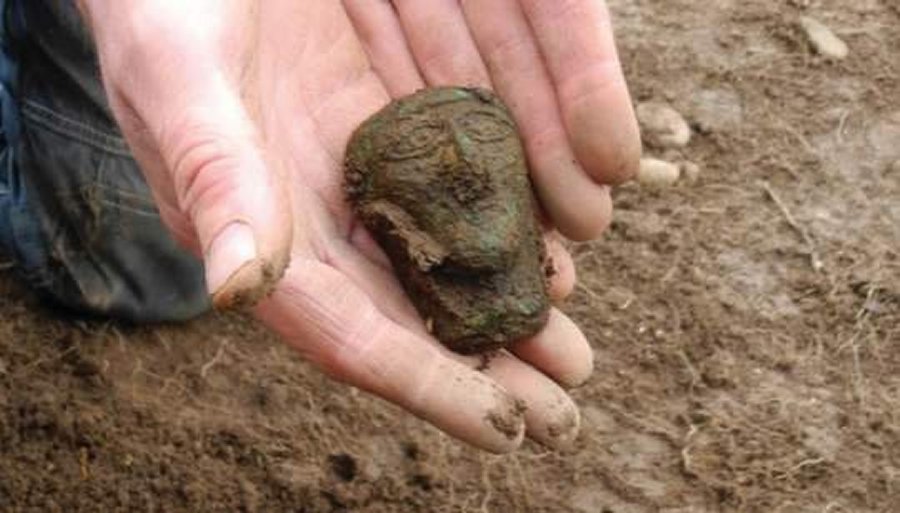Amazing Discovery Of 29 Ancient Gold Men Unearthed In Sweden
AncientPages.com - Archaeologists in Sweden have made an astounding discovery unearthing 29 ancient figurines of gold men ("guldgubbar") dating back to the Iron Age.
Working in great secrecy, archaeologists made this sensational find in Blekinge at West Vång peasant village northeast of Ronneby, located in southern Sweden.
"We have been very afraid of looting and carefully made sure to secure this location with metal detection rings," says Mikael Henriksson, an archeologist at Blekinge Museum to the Swedish newspaper Sydnytt.
No fewer than 29 anthropomorphic gold foils, gold men so-called "guldgubbar" have been discovered at the site.
This is the third-largest find of gold men to have been made in Sweden to date. One hundred similar figurines were discovered about 10-15 years ago at the Uppåkra site outside of Lund, and the in the 1980s, some 60 were stumbled upon in Slöinge, Halland. They are made from a thin gold foil and they depict figures of men and women.
They are 1-2 cm high and are imprinted on one side. They date from the 6th century and a few hundred years beyond.
The last time any gold object was found in Blekinge was back in the 1930s when a gold bracteate was stumbled upon on the island of Senoren, located in the Blekinge archipelago.
"Without a doubt, this was an important location during the Iron Age and for several hundred years onward", says Mikael Henriksson.
"It is apparent that we can begin a new chapter in our research into the Iron Age in Blekinge."
Gold men ('guldgubbar') are most often found in locations associated with power or religious rites. Nothing of its kind has ever before been found in Blekinge.
"Perhaps the location once served as a place of worship, but as yet we can only speculate. What we do know at present is that the site was once a settlement during the Iron Age", Mikael Henriksson continues.
In addition to the gold men ('guldgubbar') the archaeologists found five bronze cast heads, fragments of a vessel, as well as other bronze objects, Roman glass, gold spirals, and Viking- age coins.
The find can be dated to a period between the birth of Christ and the early Middle Ages.
Other finds indicate that the people worked in such industries as the production of iron, blacksmithing, bronze handicrafts and the manufacture of glass beads.
Naturally, artifacts of a more mundane nature have been found at the settlement.
However, the new finds suggest a more complex element to the site. Archaeologists now understand that this special place was more than just a dwelling settlement. Not far from the figurines, archaeologists discovered what appears to be an old temple.
We disagree on what to call it. But there is a big building that probably has been used for some sort of ritual, says Björn Nilsson, Senior Lecturer in Archaeology at Södertörn University to Sydnytt.
There are many questions concerning the settlement and the new finds:
How should the artifacts and finds be interpreted? How do they relate to each other in time and space?
How can the site and the findings be placed in a greater context?
It will take some time before scientists can answer these fascinating questions. For now, we know that the 29 gold men have revealed that the hill at the Western Vång has hidden many historical secrets that are now beginning to come to light.
AncientPages.com
Expand for referencesReferences:
More From Ancient Pages
-
 Old Bone Links Lost American Parrot To Ancient Indigenous Bird Trade
Archaeology | Nov 8, 2022
Old Bone Links Lost American Parrot To Ancient Indigenous Bird Trade
Archaeology | Nov 8, 2022 -
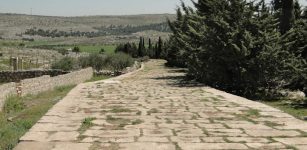 Roman Roads Laid The Foundation For Modern-Day Prosperity – New Study Claims
Archaeology | Nov 16, 2022
Roman Roads Laid The Foundation For Modern-Day Prosperity – New Study Claims
Archaeology | Nov 16, 2022 -
 Remarkably Well-Preserved Afragola Village After The Vesuvio Eruption 4,000-Years Ago
Archaeology | Sep 29, 2022
Remarkably Well-Preserved Afragola Village After The Vesuvio Eruption 4,000-Years Ago
Archaeology | Sep 29, 2022 -
 Unique Flagship ‘Gribshunden’: Spectacular Discoveries
Archaeology | Oct 2, 2019
Unique Flagship ‘Gribshunden’: Spectacular Discoveries
Archaeology | Oct 2, 2019 -
 X-Ray Of Skulls Reveals Vikings Suffered From Several Diseases
Vikings | Feb 25, 2025
X-Ray Of Skulls Reveals Vikings Suffered From Several Diseases
Vikings | Feb 25, 2025 -
 A Bronze Age Food Vessel Unearthed During A High Street Demolition 42 Years Ago Has Gone On Display At A Nearby Museum
Archaeology | Sep 13, 2022
A Bronze Age Food Vessel Unearthed During A High Street Demolition 42 Years Ago Has Gone On Display At A Nearby Museum
Archaeology | Sep 13, 2022 -
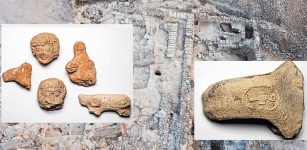 Kingdom Of Judah: Government Complex And 120 Seal Impressions Stamped On Jars – Unearthed
Archaeology | Jul 23, 2020
Kingdom Of Judah: Government Complex And 120 Seal Impressions Stamped On Jars – Unearthed
Archaeology | Jul 23, 2020 -
 Startling Discovery Of Nubian Levallois Technology In Shukbah Cave Re-Writes Ancient History Of Neanderthals And Homo Sapiens
Archaeology | Feb 24, 2021
Startling Discovery Of Nubian Levallois Technology In Shukbah Cave Re-Writes Ancient History Of Neanderthals And Homo Sapiens
Archaeology | Feb 24, 2021 -
 3D Scans Reveal Secrets Of Rare Ancient Canoe From Lake Mendota In Wisconsin
Archaeology | Jun 3, 2022
3D Scans Reveal Secrets Of Rare Ancient Canoe From Lake Mendota In Wisconsin
Archaeology | Jun 3, 2022 -
 New Details On Neanderthals – Revealed By Museum Exhibition In Norway
Archaeology | Jun 16, 2023
New Details On Neanderthals – Revealed By Museum Exhibition In Norway
Archaeology | Jun 16, 2023 -
 Ancient Burial Site At Vulci Reveals Treasure Of Coins Dated To 3rd Century B.C
Archaeology | Jul 12, 2018
Ancient Burial Site At Vulci Reveals Treasure Of Coins Dated To 3rd Century B.C
Archaeology | Jul 12, 2018 -
 Discovery Of Chromosomes Offers Evidence Of Ancient Humans Living In South America Over 18,000 Years Ago
Archaeology | Aug 21, 2022
Discovery Of Chromosomes Offers Evidence Of Ancient Humans Living In South America Over 18,000 Years Ago
Archaeology | Aug 21, 2022 -
 Inscription On Rare Tetrarchic Boundary Stone Found At Biblical Site Of Abel Beth Maacah, Israel Has Been Deciphered
Archaeology | Jan 21, 2025
Inscription On Rare Tetrarchic Boundary Stone Found At Biblical Site Of Abel Beth Maacah, Israel Has Been Deciphered
Archaeology | Jan 21, 2025 -
 Immigrants In Prehispanic Cancun Were Treated Just Like Maya Locals
Archaeology | Oct 26, 2023
Immigrants In Prehispanic Cancun Were Treated Just Like Maya Locals
Archaeology | Oct 26, 2023 -
 Submerged Ancient Bridge Found In Genovesa Cave Reveals Humans Settled In Mediterranean Much Earlier Than Previously Thought
Archaeology | Sep 2, 2024
Submerged Ancient Bridge Found In Genovesa Cave Reveals Humans Settled In Mediterranean Much Earlier Than Previously Thought
Archaeology | Sep 2, 2024 -
 Ancient Wooden Sculpture Of Queen Ankhesenpepi II Discovered At Saqqara, Egypt
Archaeology | Oct 18, 2017
Ancient Wooden Sculpture Of Queen Ankhesenpepi II Discovered At Saqqara, Egypt
Archaeology | Oct 18, 2017 -
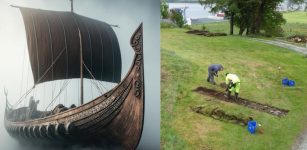 Spectacular Find – 20-Meter-Long Viking Ship Discovered In Salhushaugen Gravemound, Norway
Archaeology | Apr 21, 2023
Spectacular Find – 20-Meter-Long Viking Ship Discovered In Salhushaugen Gravemound, Norway
Archaeology | Apr 21, 2023 -
 Ancient Roman Coins Thought To Be Fakes Are Authentic – Experts Say
Archaeology | Nov 23, 2022
Ancient Roman Coins Thought To Be Fakes Are Authentic – Experts Say
Archaeology | Nov 23, 2022 -
 Babylonian Conquest Of Jerusalem As Told In The Bible – Evidence Found In Mount Zion
Archaeology | Aug 16, 2019
Babylonian Conquest Of Jerusalem As Told In The Bible – Evidence Found In Mount Zion
Archaeology | Aug 16, 2019 -
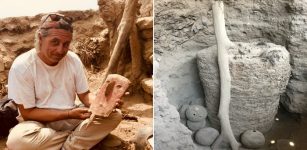 A 1,000-Year-Old Intact Mummy Unearthed In Ancient Pachacamac Site, Peru
Archaeology | May 31, 2018
A 1,000-Year-Old Intact Mummy Unearthed In Ancient Pachacamac Site, Peru
Archaeology | May 31, 2018




